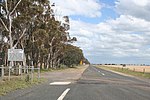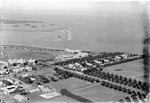Avalon Airport

Avalon Airport (IATA: AVV, ICAO: YMAV) is an international capable airport, while currently domestic airport, located in Avalon in the City of Greater Geelong in Victoria, Australia. While located outside the Melbourne metropolitan area, it is the second busiest of the four airports serving the state capital in passenger traffic. It is located 15 km (9 mi) north-east of the Geelong CBD and 50 kilometres (31 mi) south-west of the Melbourne CBD. The airport is operated by Avalon Airport Australia Pty Ltd, a subsidiary of Linfox. Avalon is currently served by passenger airlines Jetstar, which began domestic flights in 2004, and Bonza, which began service at the airport in February 2023. The airport is also the site of the biennial Australian International Airshow.Unlike Melbourne Airport, Avalon Airport is not governed by the Commonwealth's Airports Act 1996. The airport has a single runway in addition to a helipad.
Excerpt from the Wikipedia article Avalon Airport (License: CC BY-SA 3.0, Authors, Images).Avalon Airport
Beach Road, City of Greater Geelong
Geographical coordinates (GPS) Address Phone number Website External links Nearby Places Show on map
Geographical coordinates (GPS)
| Latitude | Longitude |
|---|---|
| N -38.040555555556 ° | E 144.47083333333 ° |
Address
Avalon Airport
Beach Road 80
3212 City of Greater Geelong
Victoria, Australia
Open on Google Maps





